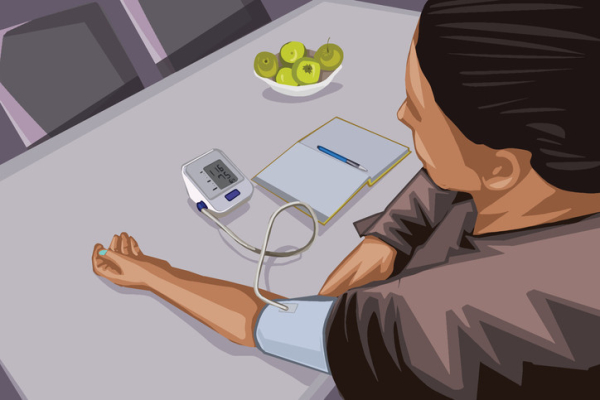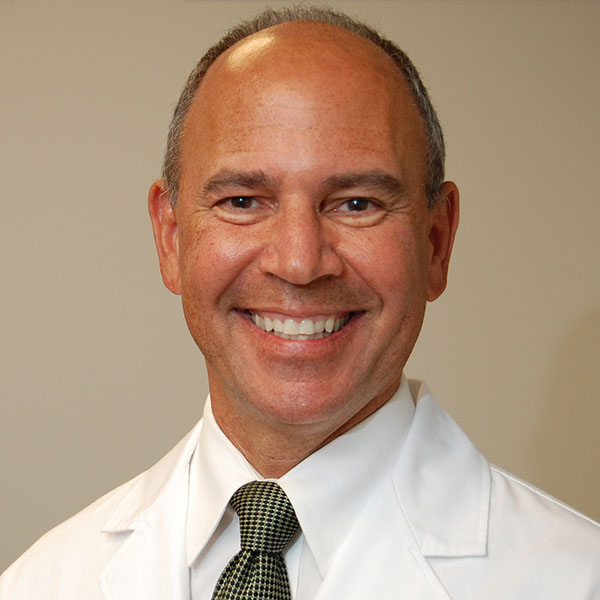
When was the last time you had your blood pressure checked? All adults should have this simple test at least once a year.
If a blood pressure reading at your doctor’s office is elevated — that is, higher than a healthy range — current guidelines from the US Preventive Services Task Force recommend repeating the measurement outside of a clinic setting before starting treatment. But that’s not the only reason why your doctor may suggest regularly tracking your blood pressure at home.
Why monitor blood pressure at home?
“Some people have blood pressure elevations only at the doctor’s office, which is known as white-coat hypertension,” says Dr. Stephen Juraschek, associate professor of medicine at Harvard-affiliated Beth Israel Deaconess Medical Center. One of the best ways to know if your blood pressure is truly higher than normal is to measure it multiple times at home.
Home monitoring is also a good idea:
- if your doctor asks you to track readings to help decide if you need to start taking medication to lower blood pressure
- if you’ve been diagnosed with high blood pressure and need to adjust your medications to make sure you’re reaching your blood pressure target
- if you’re pregnant or had a baby in recent months and your health team is concerned about preeclampsia. This condition is a severe form of high blood pressure that can harm vital organs like the kidneys. When not promptly treated, it sometimes leads to seizures, stroke, or even death.
Which home blood pressure monitor should I buy?
- Look for a monitor that’s been validated, which means the device has been independently reviewed for accuracy.
- Avoid monitors that feature cuffs used on the wrist or fingertip. These aren’t as accurate as upper-arm cuffs.
- Choose and use the right size cuff. Measure the circumference of your upper arm midway between your elbow and shoulder. Most home monitor cuffs can accommodate arm circumferences of 9 to 17 inches, but smaller and larger cuffs are available. A too-small cuff can lead to an artificially high reading, while a loose cuff can give a falsely low reading. For example, a 2023 randomized study of automated blood pressure monitors tested a regular size cuff on adults who need a different size cuff. The researchers found systolic blood pressure readings increased 19.5 mm Hg for participants who should have used an extra-large cuff, and by 4.8 mm Hg for participants who should have used a large cuff.
Very basic models cost as little as $25. But more expensive models, which range from about $50 to $100, may be more convenient to use. They can store multiple readings and send the data to your computer or smartphone — or even directly to the patient portal at your doctor’s office.
Three key points about blood pressure readings
Home blood pressure monitoring is a bit more involved than some people assume. “It’s not something you just do sporadically or whenever you have time,” says Dr. Juraschek.
- Blood pressure fluctuates throughout the day, which means one isolated reading doesn’t provide accurate information.
- If you check your blood pressure when you’re upset or stressed, it’s likely to be high. If you take it again right away, you may get another high reading, which feeds a cycle of anxiety and elevated readings, he says.
- Consistent, repeated measurements provide a far more useful assessment than occasional measurements.
How often should you take your blood pressure at home?
Ask your doctor how often and what time of day to take your blood pressure.
“The gold standard for home monitoring is to take 28 separate measurements, which you can then average to get a representative reading,” says Dr. Juraschek.
That means taking your blood pressure four times a day — twice in the morning and twice in the evening — for seven days in a row. However, even 12 measurements over three days is reasonable, especially if you include one weekend day, Dr. Juraschek says. Your doctor can advise you about what makes the most sense for your situation.
How can you get an accurate blood pressure reading?
Common mistakes can raise your blood pressure reading by a few points, or as much as 10 or even up to 25 points in some cases. Here’s what to do or avoid — and why — for an accurate blood pressure reading.
Wait at least 30 minutes after smoking, consuming caffeine or alcohol, or exercising before taking blood pressure.
Why? Caffeine and nicotine constrict blood vessels and boost your heart rate, which can raise blood pressure. Alcohol dilates blood vessels, possibly lowering blood pressure. And exercise increases heart rate and blood pressure.
Empty your bladder.
Why? A full bladder can put pressure on and reduce blood flow to your kidneys. Your body’s natural response is to raise your blood pressure to make sure your kidneys are getting enough blood.
Sit comfortably, supporting your arm near heart height.
Sit back in your chair with your feet flat on the floor, legs and ankles uncrossed, and your arm extended, palm up, on a table so that your elbow is positioned roughly at heart height.
Why? Crossing your legs, especially at the knee, temporarily raises blood pressure. If your feet or your arm are not supported, your muscles will contract. Even this small amount of isometric exercise can raise your blood pressure. Also, supporting your arm below or above the level of your heart may affect the accuracy of the reading.
Wait a few quiet minutes before taking a reading.
First, wrap the proper size cuff around your bare arm about an inch above the crook of your elbow. Sit quietly for a few minutes without distractions like TV, reading, phone scrolling, or talking. Then start the machine to take your blood pressure.
Why? Putting the cuff over clothes — or pushing up your sleeve so that it’s tight around your upper arm — may interfere with an accurate reading, though evidence on this is mixed. Ideally, you want to record blood pressure while feeling relaxed, not distracted, because even minor stress or tension can raise your blood pressure.
This video from the American Heart Association demonstrates the correct technique.
Why is diagnosing high blood pressure so important?
Nearly half of all adults have high blood pressure, but about a third of these people aren’t even aware they have the problem. An accurate diagnosis and treatment is vital, says Dr. Juraschek. Few things in medicine have shown such consistent results as the harms of high blood pressure, which is a major cause of heart attacks, strokes, kidney disease, and cognitive decline.
“It’s called the silent killer for a reason. We don’t feel or experience any of high blood pressure’s effects until it’s too late,” he says.
About the Author

Julie Corliss, Executive Editor, Harvard Heart Letter
Julie Corliss is the executive editor of the Harvard Heart Letter. Before working at Harvard, she was a medical writer and editor at HealthNews, a consumer newsletter affiliated with The New England Journal of Medicine. She … See Full Bio View all posts by Julie Corliss
About the Reviewer

Howard E. LeWine, MD, Chief Medical Editor, Harvard Health Publishing
Dr. Howard LeWine is a practicing internist at Brigham and Women’s Hospital in Boston, Chief Medical Editor at Harvard Health Publishing, and editor in chief of Harvard Men’s Health Watch. See Full Bio View all posts by Howard E. LeWine, MD